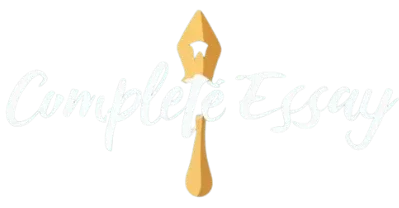Starting an explanatory essay may seem like a daunting task, but fear not! The introductory paragraph is like the gateway to your essay, inviting your readers to step into the world of your ideas.
In this blog post, we’ll unravel the mystery behind the perfect introductory paragraph for an explanatory essay. We’ll break down the key elements that should be included, making it easy for you to kick off your essay with confidence.
Whether you’re a seasoned writer or just starting, understanding these elements will set the stage for a clear and engaging essay that captivates your audience from the very beginning. Let’s dive in!
Contents
- 1 Crafting an Engaging Introduction for an Explanatory Essay
- 2 Creating a Clear Overview of Your Explanatory Essay
- 3 Establishing Your Thesis Statement in the Introduction
- 4 Including Relevant Background Information
- 5 Conclusion:
- 6 FAQs
- 6.1 What is the primary purpose of the introductory paragraph in an explanatory essay?
- 6.2 Should I include a thesis statement in the introductory paragraph?
- 6.3 How long should the introductory paragraph be?
- 6.4 Can I use a hook or attention-grabbing technique in the introduction?
- 6.5 Is it necessary to provide background information in the introductory paragraph?
- 6.6 Should I mention the points I will discuss in the essay within the introductory paragraph?
Crafting an Engaging Introduction for an Explanatory Essay
What is the most important part of an essay? The introduction! The introduction is what will either engage your reader and make them want to read more, or bore them and make them want to put the essay down.
Crafting an engaging introduction for an explanatory essay is essential if you want to get good grades and have people actually read what you write!
So, what makes a good introduction? A good introduction will have a hook that catches the reader’s attention, and will give some background information on the topic of the essay. The introduction should also state the thesis of the essay – that is, what you will be trying to explain in the body of the essay.
A good hook for an explanatory essay can be a interesting fact about your topic, a quotation, or a question that the reader will want to know the answer to. For example, if you are writing an essay about the causes of the American Revolution, you could start with a hook like this: “In 1775, only one in ten Americans owned a firearm.
By 1776, that number had increased to one in three.” This hooks catches the reader’s attention and makes them want to know why there was such a sudden increase in gun ownership – which is exactly what you will be explaining in your essay!
Once you have caught the reader’s attention with your hook, you need to give some background information on the topic. This will help the reader understand what you are talking about and why it is important. For our example on the causes of the American Revolution, you might want to provide some brief historical context, such as when the Revolutionary War took place and what was happening in America at that time.
After giving the reader some background information, you need to state your thesis. This is what you will be trying to explain in your essay.
For our example, a good thesis statement might be: “There were many causes of the American Revolution, but the three most important were the economic issues colonists faced, the lack of constitutional rights, and British policies.” By stating your thesis at the beginning of the essay, you let the reader know what to expect and what you will be discussing.
Now that you know what goes into a good introduction, you can start writing your own! Just remember to include a hook, background information, and a clear thesis statement, and you’ll be on your way to engaging your reader and getting a great grade.

Creating a Clear Overview of Your Explanatory Essay
An explanatory essay is a type of writing in which the author presentaitons to the reacder information on a certain topic. This type of essay is usually written in response to a prompt that asks the writer to explain something. The goal of an explanatory essay is to clear up any confusion that the reader might have about the topic, and to provide new information that the reader might find useful.
In order to write a good explanatory essay, it is important to have a clear understanding of the topic you are writing about. This means doing some research and becoming familiar with the different aspects of the topic. Once you have a good understanding of the topic, you can start to organize your thoughts and ideas into an essay outline.
The first step in creating an explanatory essay is to come up with a thesis statement. This statement should be one or two sentences that sum up the main points of your essay. After you have created your thesis statement, you can start to write the body of your essay. In the body, you will want to include information that supports your thesis statement. Be sure to include evidence from your research to back up any claims you make.
Once you have written the body of your essay, you can move on to the conclusion. In the conclusion, you will want to summarize the main points of your essay and leave the reader with something to think about. Be sure to end your essay with a strong closing sentence that ties everything together.
Creating an explanatory essay can be a challenging task, but by following these tips you can ensure that your essay is clear and informative. With a little bit of planning and effort, you can write an essay that will help your reader understand your chosen topic.
Establishing Your Thesis Statement in the Introduction
Thesis statements are complete sentences that state an opinion or claim about a topic. A thesis statement should be arguable so that readers can be persuaded to agree or disagree with the statement.
Thesis statements are typically placed at the beginning of an essay, but they can also be placed in the middle or end of an introductory paragraph. In order to write a successful thesis statement, determine what kind of paper you are writing, research your topic, and narrow your focus.
A thesis statement is the foundation of any academic paper. A good thesis statement will guide the rest of your paper, and can be succinctly stated in your introduction. Begin your introduction by hooking your reader’s attention with a strong opening sentence.
This could be a quote, statistic, or interesting fact about your topic. After your opening, briefly introduce your topic and explain why it is important. Then, state your thesis statement. Your thesis should be specific and arguable, and should be the last sentence of your introduction.
If you are having trouble writing a good thesis statement, try one of these techniques:
• Ask a question about your topic. Can you answer it with a simple yes or no? If not, your thesis might be too general.
• Brainstorm some research questions about your topic. Your thesis statement can be a concise answer to one of these questions.
• Take a position on a controversial issue about your topic. Your thesis should take a stand on an issue that readers might disagree with.
• Make a list of pros and cons related to your topic. Your thesis statement can be your opinion on which side of the argument is stronger.
Once you have a strong thesis statement, the rest of your paper will be much easier to write. Remember to support your thesis with evidence from credible sources, and to always present your argument in a clear and logical manner.

Including Relevant Background Information
Including relevant background information in your written work is important for a number of reasons. First, it can help provide context for the reader and give them a better understanding of the information you are presenting.
Secondly, background information can help to support your claims and arguments by providing evidence and examples. Finally, including relevant background information can also make your work more engaging and interesting to read.
When deciding what background information to include in your work, it is important to consider what will be most helpful and relevant for the reader. In general, you should try to include information that is directly related to the main points of your work.
However, you should also avoid including too much information, as this can quickly become overwhelming for the reader. Instead, focus on including only the most essential background information.
There are a number of different ways that you can include relevant background information in your work. One way is to provide a brief overview of the topic at the beginning of your work. This can help to orient the reader and give them a general understanding of the material you will be covering.
Another option is to weave background information into the main body of your text, as this can help to support your arguments and make your work more convincing. Finally, you can also include background information in footnotes or endnotes. This can be a good way to provide additional information without disrupting the flow of your text.
No matter how you choose to include relevant background information in your work, it is important to make sure that it is clear and concise.
Remember, your goal is to provide the reader with enough information to understand your work, but not so much that they become lost or confused. If you can strike this balance, you will be well on your way to writing a successful piece of writing.
Conclusion:
In conclusion, there are several elements that should be included in the introductory paragraph of an explanatory essay. First, it is important to introduce the topic and provide some background information.
Next, you will want to narrow the focus of your essay and explain why the topic is important. Finally, you will want to state your thesis or main argument.
By including these elements in your introductory paragraph, you will set the stage for a successful explanatory essay.
FAQs
What is the primary purpose of the introductory paragraph in an explanatory essay?
The introductory paragraph serves as the opening statement of your essay, introducing the topic and providing a preview of the key points you will explain. It aims to capture the reader’s attention and set the tone for the entire essay.
Should I include a thesis statement in the introductory paragraph?
Yes, a thesis statement is a crucial element of the introductory paragraph. It succinctly outlines the main idea of your essay, giving readers a roadmap for what to expect. Ensure your thesis is clear and specific.
How long should the introductory paragraph be?
While there’s no strict rule, aim for a concise and focused introduction. Generally, it should be around 10-15% of your total essay length. Avoid unnecessary details and get straight to the point.
Can I use a hook or attention-grabbing technique in the introduction?
Absolutely! Using a hook, such as a quote, anecdote, or a thought-provoking question, can engage readers from the start. However, ensure that it relates to your topic and smoothly transitions into the main content.
Is it necessary to provide background information in the introductory paragraph?
Yes, but keep it brief. Provide enough background information to give context to your topic. Remember, the primary focus is on introducing the main idea and thesis statement.
Should I mention the points I will discuss in the essay within the introductory paragraph?
Yes, include a brief overview of the key points or topics you will cover. This helps readers understand the structure of your essay and what to anticipate in the following paragraphs.







